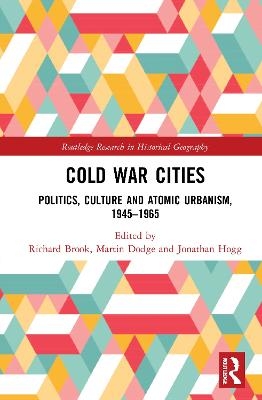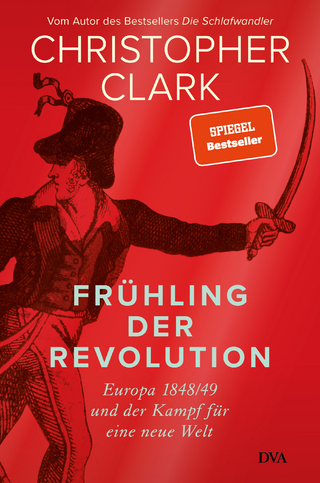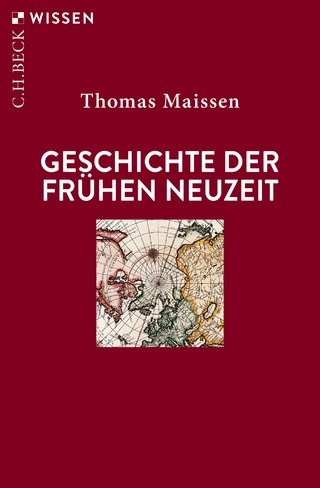
Cold War Cities
Routledge (Verlag)
978-1-138-57361-1 (ISBN)
The Cold War saw the birth of ‘atomic urbanisation’, central to which were planning, politics and cultural practices of the newly emerged cities. This book examines cities in the Arctic, Europe, Asia and Australasia in detail to reveal how military, political, resistance and cultural practices impacted on the spaces of everyday life. It probes questions of city planning and development, such as: How did the threat of nuclear war affect planning at a range of geographic scales? What were the patterns of the built environment, architectural forms and material aesthetics of atomic urbanism in difference places? And, how did the ‘Bomb’ manifest itself in civic governance, popular media, arts and academia? Understanding the age of atomic urbanism can help meet the contemporary challenges that cities are facing.
The book delivers a new dimension to the existing debates of the ideologically opposed superpowers and their allies, their hemispherical geopolitical struggles, and helps to understand decades of growth post-Second World War by foregrounding the Cold War.
Richard Brook is an architect and Reader at Manchester School of Architecture, UK. He is author of Manchester Modern (2017). He has talked, written, curated and published extensively on post-war British architecture. He researches the policies of planning and regulation and their impact on urban form. Martin Dodge is a Senior Lecturer in Human Geography at the University of Manchester, UK. His major research interests are currently visual culture and the politics of mapping, and infrastructural geographies read through historical and archival perspectives. Jonathan Hogg is a Senior Lecturer in History at the University of Liverpool, UK. He has conducted extensive research on the cultural and social history of the British nuclear state. His recent publications offer a new interpretation of nuclear culture and the Cold War by tracing the tensions between 'official' and 'unofficial' nuclear narratives.
Cold War Cities: Spatial Planning, Social and Political Processes, and Cultural Practices in the Age of Atomic Urbanism, 1945-1965 Part 1: Planning the Cold War City 1. Properties of Science: How Industrial Research and the Suburbs Reshaped Each Other in Cold-War Pittsburgh 2. The City of Bristol: Ground Zero in the Making 3. Towards a Prosperous Future Through Cold War Planning: Stalinist Urban Design in the Industrial Towns of Sillamäe and Kohtla-Järve, Estonia 4. Nuclear Anxiety in Postwar Japan’s City of the Future Visual Essay: Urbanism of Fear: A Tale of Two Chinese Cold War Cities Part 2: Building the Cold War City 5. The Warsaw Metro and the Warsaw Pact: From Deep Cover to Cut-and-Cover 6. Competing Militarisation and Urban Development During the Cold War: How a Soviet Air Base Came to Dominate Tartu, Estonia 7. In-Between the East and the West: Architecture and Urban Planning in ‘Non-Aligned’ Skopje 8. Atomic Urbanism Under Greenland’s Ice Cap: Camp Century and Cold War Architectural Imagination Visual Essay: Warfare or Welfare? Civil Defence and Emergency Planning in Danish Urban Welfare Architecture Part 3: Culture and Politics in the Cold War City 9. Urban Space, Public Protest, and Nuclear Weapons in Early Cold War Sydney 10. In the Middle of the Atomic Arena: Visible and Invisible NATO Sites in Verona During the Nineteen Fifties 11. Conceiving the Atomic Bomb Threat Between West and East: Mobilisation, Representation and Perception Against the A-bomb in 1950s Red Bologna 12. Making a ‘Free World’ City: Urban Space and Social Order in Cold War Bangkok Visual Essay: Cold War Telecommunication and Urban Vulnerability – Underground Exchange and Microwave Tower in Manchester
| Erscheinungsdatum | 15.01.2021 |
|---|---|
| Reihe/Serie | Routledge Research in Historical Geography |
| Zusatzinfo | 2 Tables, black and white; 1 Line drawings, black and white; 111 Halftones, black and white; 112 Illustrations, black and white |
| Verlagsort | London |
| Sprache | englisch |
| Maße | 156 x 234 mm |
| Gewicht | 689 g |
| Themenwelt | Geschichte ► Allgemeine Geschichte ► Neuzeit (bis 1918) |
| Geschichte ► Allgemeine Geschichte ► Zeitgeschichte | |
| Geschichte ► Teilgebiete der Geschichte ► Wirtschaftsgeschichte | |
| Naturwissenschaften ► Geowissenschaften ► Geografie / Kartografie | |
| Sozialwissenschaften ► Politik / Verwaltung | |
| ISBN-10 | 1-138-57361-2 / 1138573612 |
| ISBN-13 | 978-1-138-57361-1 / 9781138573611 |
| Zustand | Neuware |
| Haben Sie eine Frage zum Produkt? |
aus dem Bereich


